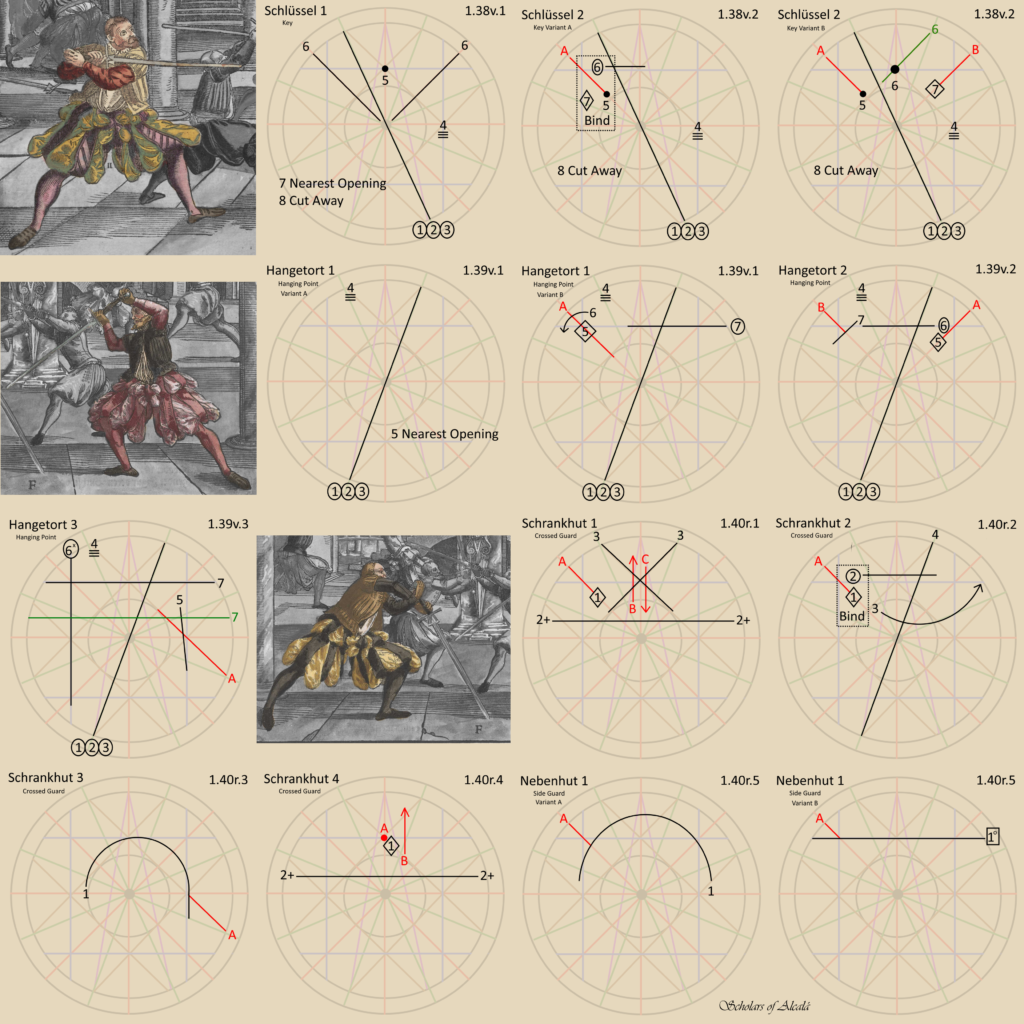This month at Alcala we’ll be looking at four guards: Key, Hanging Point, Crossed Guard, and Side Guard.

The Schlüssel (Key) devices starts with the all too common three slashes from the right side. After the third slash, you refuse the blade by pulling it back into Schlüssel (Key). This can be used to prevent the opponent from binding or beating your sword. It can also be an invitation, drawing them in close.
If they don’t respond, quickly thrust at the face. If they attack, counter-thrust for your pary.
The Hangetort (Hanging Point) devices change it up by having the three slashes start on the left side. At the end of the third slash, transition into Hangetort (Hanging Point) and look. If you see an opening, attack it directly. If you don’t, throw some more slashes to create one.
If the opponent attacks while you are moving into Hangetort (Hanging Point), the 2nd thru 4th devices explain what to do.
Schrankhut (Crossed Guard) is next. This is also called Eisenport (Iron Gate), but Meyer says that name is incorrect. This can be a fun posture to lure your opponent in, but heavy gauntlets may prevent you from fully forming the posture. So if you’re training for a steel tournament, you might want to give this set a pass.
For the basic parry, just lift both shoulders so that you find yourself in what feels like a sideways Kron (Crown) guard.
Device 4 is the counter to Schrankhut (Crossed Guard).
We don’t have an illustration of Meyer’s Nebenhut (Side Guard), but given the description it is probably Mair’s “standing in the Krumphaw”. Which is convenient because the first of the two devices appears to be a Krumphauw (Crooked Cut).

You can find all of our posters at Resources – Scholars of Alcala.